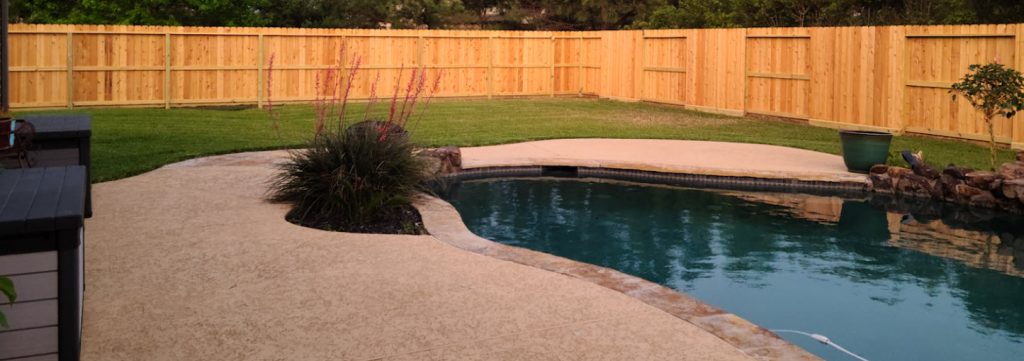Perfect Wood Fence Installation: Key Steps
Wood fence installation shows a simple appearance at first but requires careful planning and precise execution to be successful. We see numerous homeowners who begin without proper planning but end up with both expensive mistakes and long-term delays. The purpose of this article is to provide you with essential steps that result in flawless wood fence installation. A comprehensive guide follows that explains every requirement to build fences which will survive long-term exposure. Your property needs a stunning wood fence which will become your best investment.

Key Points On Wood Fence Installation
A successful wood fence installation begins with site planning followed by permit acquisition and accurate boundary definition.
Select wood materials including pressure-treated wood and cedar alongside galvanized hardware components.
Fence posts must be set firmly into the ground through post hole digging and level checking before quick-set concrete application.
The installation process includes rail and panel placement that requires both level positioning and proper spacing.
A protective sealant or stain application combined with routine maintenance helps achieve durability.
Planning and Site Preparation
The success of a wood fence installation depends on proper site preparation which needs to happen before construction starts. We will demonstrate the critical elements for ensuring your project succeeds in the following vital steps.
To begin our project we need to secure required permits as well as understand the requirements of local building codes according to https://texasfence.com/wood-privacy-fences/. The critical nature of this step helps us avoid legal consequences while confirming our fence meets all community requirements.
We must clearly define all boundaries before proceeding with our fence construction. It is beneficial to share our fencing plans with neighbors to avoid disputes and preserve good neighborly relationships. We establish boundaries first before we use batter boards to define the fence outline together with string lines. This method enables us to position elements with precision while showing us the finished product.
A fence built with cedar wood will have a longer lifespan because it resists decay and moisture effectively making it the preferred choice according to https://texasfence.com/wood-privacy-fences/.
When choosing materials we prefer cedar wood since it lasts longer and naturally protects against rotting and pest infestation. The choice provides excellent benefits for establishing a durable fence that will enhance the beauty of our outdoor space.
The placement of fence posts requires the 3-4-5 method to produce straight corners with accurate alignment. The wood fence installation process remains consistent because of this approach. Our site preparation process leads to an effective fence installation which will improve our property value during future years.
Choosing Materials and Tools
Our site preparation is finished so we begin the process of selecting materials together with tools for the wood fence installation. Let’s start with the wood itself. We choose pressure-treated wood because it provides excellent weather resistance which makes our fence durable for future use. To protect your wood from environmental damage you must apply both a stain and a sealant.
We select galvanized hardware because it protects against corrosion and rust. Our selection includes post brackets along with nails and screws.
A post hole digger stands as a crucial tool because it enables us to dig consistent deep holes for fence posts efficiently. A level will serve as our tool to check that our fence is both straight and correctly aligned. The use of a laser level provides exact precision to our work.
The circular saw will prove vital for making exact cuts that are necessary during installation work. The installation requires concrete materials to secure fence posts in the ground.
Setting Fence Posts
Our wood fence installation requires proper fence post installation as its fundamental foundation. The initial step requires digging post holes to meet community standards at a depth of about two feet. The post holes must be three times as wide as the posts to provide stability to our fence structure.
The wood selection must prioritize resistance to decay and maintenance requirements because they determine the lifespan of your fence.
Our next step involves using a post level to check that each post stands perfectly vertical before we move on to concrete setting. The process serves as a foundation for maintaining proper alignment throughout our entire fence installation. Our dry quick-set concrete mixture requires water to activate curing. This concrete type requires between 20 and 40 minutes for setting which enables efficient work.
During concrete curing we will support the posts with scrap two-by-fours. The technique functions to preserve alignment together with stability during concrete setting. The installation of a fence requires proper bracing in order to produce a long-lasting fence.
Installing Rails and Panels
We will begin installing our fence posts before moving on to the rails and panels.
The fence rails will get their proper fasteners at posts to establish structural stability.
We will carefully position fence panels between posts by using blocking to achieve the correct height and ensure perfect level installation.
Securing Rails to Posts
Wood fence installation requires correct rail-post attachment as an essential process. We will attach the rails to posts using galvanized screws or nails to ensure durability and longevity. The rails should run horizontally between the fence posts at our planned height for correct installation.
We need to double-check that rails are at level and evenly spaced because this will form the solid base for fence panels.
We will work together to achieve exact rail attachments. We will apply suitable fasteners to secure the rails strongly while ensuring no movement or instability occurs. Our mission focuses on building a cohesive structure that will resist time and other elements.
After attaching the rails we can start placing the fence panels. The panels will be attached to the rails through appropriate hardware for achieving uniformity and visually appealing results. These instructions help us build more than a fence since they establish a secure boundary which enhances both appearance and property defense. Our expertise should shine through our work as we finish this vital stage of constructing a wood fence installation.
Proper Panel Placement Techniques
A sturdy and visually appealing wood fence requires exact panel placement as its fundamental element. Before placing fence panels we need to ensure they will fit snugly between the posts. The correct height can be achieved through blocking while making necessary height adjustments for a level and uniform look.
A uniform appearance depends on correct panel placement. We need to carefully position each panel against the posts while ensuring they remain straight and maintain even spacing. The overall appearance of our wood fence installation depends on the careful details we pay attention to.
For maximum stability we will attach panels to posts using screws. We need to install four screws per side to provide a secure fastening system which will withstand weather conditions and possible impacts. The installation technique delivers better strength than traditional fasteners and nails.
We will verify the correct placement of panels while performing this process and perform any needed adjustments. These methods help us build fences that become long-lasting boundaries which provide both security and beauty to our properties.
Ensuring Level Installation
Level installation of rails and panels is essential to create a professional-looking wood fence. We will use a level throughout the process to ensure horizontal alignment and to prevent problems like sagging or uneven gaps between panels. The finish will be polished because of our exact focus on details.
The team will verify each rail and panel installation for levelness and make necessary adjustments before proceeding. The entire fence line must have consistent measurements.
Adding Finishing Touches
The final stage of wood fence installation includes finishing touches that improve both appearance and lifespan of wood fences. A protective sealant or stain application will be added to the fence to increase its durability and resistance to weather elements. Time maintenance of the fence depends on this vital process to keep it functional. The sealant or stain requires periodic reapplication every few years to keep the fence properly protected.
The addition of decorative post caps to our fence will give it a finished look. The decorative post caps provide two benefits by making the fence more attractive while protecting the post tops. We will remove any leftover material while cleaning the surrounding area to achieve a tidy finish.
Regular maintenance practices help maintain the superior quality of our fence structure. Periodic inspections must be conducted to check for any signs of damage together with pest infestation or rot. Early detection and response to problems helps maintain both structural health and visual integrity of the fence. The condition of the sealant or stain should be monitored because regular application helps increase the duration of the fence. These procedures will help our wood fence serve as a long-lasting attractive border for our property throughout multiple years.
Maintenance and Care
The longevity and beauty of your wood fence depend on proper maintenance together with regular care practices. Inspecting our fence regularly stands as an essential practice because it helps us detect problems early so we can take immediate action. Our investment receives extended lifespan through regular maintenance repairs which we perform in a timely manner.
We should establish annual cleaning as our top priority to protect both the fence’s appearance and its structural foundation.
The application of protective coatings such as stain or sealant serves as a defense mechanism to protect our wood fence from weather conditions. This basic practice delivers significant protection to the structure. The longevity of your fence depends on regular vegetation trimming near its base while maintaining proper airflow.
The wood fence maintenance activities which we perform together create advantages for everyone in our community.
Frequently Asked Questions About Wood Fence Installation
How Do You Install a Fence Step by Step?
Let’s work together to build our fence. The installation process involves measuring and marking post positions followed by hole digging and post placement in concrete and then attaching rails and panels before finishing with caps and sealant. Our property boundary will gain strength from this installation.
What Is the Hardest Part of Installing a Fence?
Fence installation requires the same level of difficulty as assembling numerous pieces in a puzzle. The process of perfectly installing fence posts represents our most critical task. The stability and alignment of a structure depend heavily on this element. We share this challenge together so we will address it through precise teamwork.
What Do You Put at the Bottom of a Wooden Fence?
The bottom of a wooden fence requires gravel or crushed stone as its protective layer. The material plays a crucial role in water drainage and maintains both stability and product lifespan. Our investment receives protection through this approach because it stops water accumulation while keeping pests away and stopping wood from rotting. Let’s build it right!
How Do You Layout a Wooden Fence Post?
We’ll create an absolute masterpiece of a fence layout! Our fence construction will begin with batter boards and string lines to define its boundaries. We will use the 3-4-5 method to square corners before marking post positions to achieve exact alignment. The group stands together to support fellow fence enthusiasts in this effort.
Takeaway
The following guide provides complete instructions to achieve flawless wood fence installation results. The process of wood fence installation requires thorough planning followed by regular maintenance that requires both precision and careful attention. The end result of this challenging process leads to a durable fence that combines both functionality and attractive appearance. Using our technical guidance along with suitable tools and materials will help you create an enhanced perimeter for your property. The maintenance detail you put in now will help avoid expensive future repairs. Let’s create an aesthetically pleasing functional fence.








